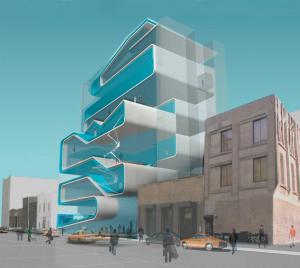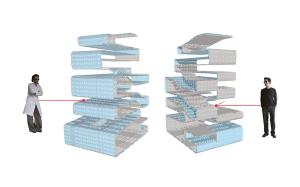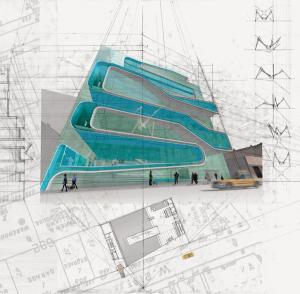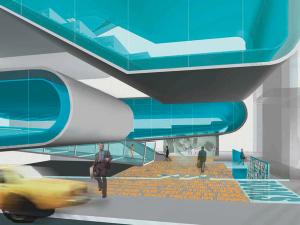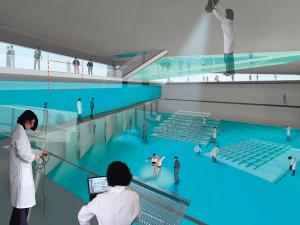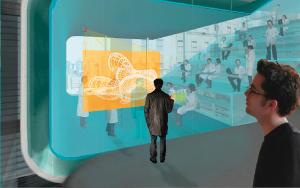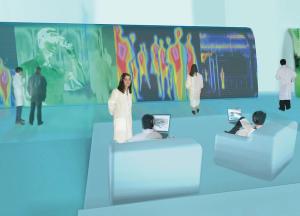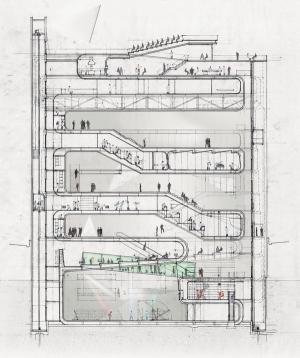EYEBEAMMUSEUMOFARTANDTECHNOLOGY
The dot-com boom of the late 1990s ended with a stock-market crash and Y2K paranoia—indications of the ways in which digital culture would shape the new millennium. While artists adopted new technologies as unexplored mediums—experimenting with video games, computer animation, and robotics—traditional museums were slow to catch on. In 1998, John Johnson, an heir to the Johnson & Johnson pharmaceuticals fortune, founded Eyebeam, a new type of arts organization supporting creative engagement with technology. In 2000, Eyebeam set out to create a new museum that would be equally devoted to exhibition and production. Planned for a midblock site in New York City’s Chelsea neighborhood, the program also included a theater, a school, and production facilities.
The Eyebeam Museum was designed as a platform for artists that encouraged cross-programming and spatial interweaving with the public. The design of the building conjoins production and presentation, delineated only by a pliable ribbon. The ribbon undulates from side to side as it climbs up from the street, floor folding into wall folding into floor, gradually stepping back to fit into the site’s zoning envelope. With each change of direction, the ribbon alternately enfolds a space where art is made and a space where it is exhibited, thus intertwining strands of resident artists and visitors as well as their diverse activities and speeds. Although residents use the east core and visitors use the west core, each must pass through the space of the other when moving through successive levels. The building was conceived as a strategy for controlled contamination.
The ribbon consists of a two-ply surface: a smooth concrete shell with precast service jacks, or “smart pores,” at exhibition levels, which allow artists to plug in to data and electrical power sources anywhere, and a lightweight skin of popout panels that allow access to the structure’s “nervous system,” a network of computers, sensors, and digital controls that operate the building. In recognition of the rapid obsolescence of new technologies, the open infrastructure ensures that the building remains agile and able to accommodate rapid change.
John Johnson terminated the project when he decided to move to Costa Rica to pursue surfing; he later established the news website BuzzFeed. Eyebeam remained in a Chelsea loft building until it moved to Brooklyn in 2014.
| Location New York, United States |
| Partners | Elizabeth Diller and Ricardo Scofidio |
| Project Leaders | Charles Renfro,Deane Simpson,and Dirk Hebel |
| Designers | Joshua Bolchover,Alfio Faro,Reto Geiser,Gabriele Heindel,David Huang,Dieter Janssen,David Ross,Matthew Johnson,and Alex Haw |
